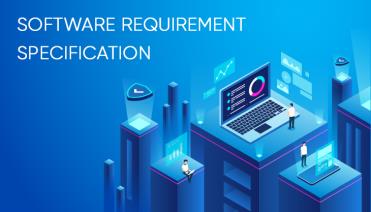In the realm of software engineering, a well-defined roadmap is crucial for navigating the complexities of development. This roadmap takes the form of a Software Requirements Specification (SRS), a document that serves as the foundation for building successful software applications. Bet Winner Uganda This article delves into the essence of an SRS, exploring its purpose, components, and the benefits it brings to the software development process.
Read More: Why Ads Are Taking Over Your Android Phone (and How to Fight Back)
What is an SRS?
An SRS, or Software Requirements Specification, is a comprehensive document that outlines the functionalities, features, and behaviors expected of a software product. It acts as a blueprint, meticulously detailing what the software needs to achieve and how it should perform. The SRS serves as a vital communication tool, ensuring clear understanding between various stakeholders involved in the development process, including:
- Customers or Clients: The SRS provides them with a clear picture of what they can expect from the final product, allowing them to verify that the software aligns with their needs.
- Software Development Teams: The SRS becomes the guiding light for developers, testers, and other team members, outlining the specific functionalities they need to build and test.
- Project Managers: The information within the SRS empowers project managers to effectively plan resource allocation, define timelines, and manage development efforts.By establishing a shared understanding of the software’s purpose and characteristics, the SRS fosters a collaborative and efficient development environment.
Key Components of a Well-Structured SRS
A well-structured SRS typically encompasses the following key sections:
- Introduction: This section provides an overview of the document, outlining its purpose, scope, and intended audience. It also defines any relevant acronyms or terminology used throughout the document.
- Overall Description: This section describes the software product at a high level, detailing its intended functionalities and target users. It also clarifies any system-level constraints or dependencies.
- Specific Requirements: This is the heart of the SRS, meticulously outlining the software’s functional and non-functional requirements.
- Functional Requirements: These define what the software will do, specifying the functionalities it needs to deliver. This includes user interactions, data processing, and output generation.
- Non-Functional Requirements: These delve into the characteristics of the software, outlining qualities like performance, security, usability, and maintainability.
- System Interfaces: This section details how the software interacts with external systems and components. It outlines data exchange formats, communication protocols, and any security considerations.
- Other Considerations: This section can encompass additional details relevant to the project, such as quality assurance procedures, assumptions made during development, and anticipated future enhancements.The specific structure and content of an SRS can vary depending on the size and complexity of the software project. However, adhering to a well-defined framework ensures the document effectively captures all essential requirements.
Benefits of a Comprehensive SRS
Developing a comprehensive SRS offers numerous benefits for software development projects. Here are some key advantages:
Improved Communication and Collaboration: The SRS fosters clear communication between stakeholders by providing a shared reference point for the software’s functionalities and expectations. By doing this, miscommunications are decreased and everyone is in agreement.
Reduced Development Risks: A well-defined SRS helps identify potential issues and missing requirements early in the development lifecycle. This allows for proactive mitigation strategies, reducing the risk of costly rework and delays later in the project.
- Enhanced Project Management: The detailed information within the SRS empowers project managers to make informed decisions regarding resource allocation, project timelines, and development milestones.
- Streamlined Testing Process: The SRS serves as a vital resource for the testing team. By outlining the expected functionalities and behaviors, the SRS guides the creation of comprehensive test cases, ensuring all aspects of the software are thoroughly evaluated.
- Maintainability and Future Enhancements: A well-documented SRS simplifies future maintenance and upgrade efforts. Developers referencing the document can readily understand the existing functionalities and how changes might impact the system.
Crafting an effective SRS
Developing an impactful SRS requires a meticulous approach. Here are some valuable tips:
- Involve stakeholders early. It’s crucial to involve key stakeholders throughout the SRS creation process. This ensures the document captures all essential requirements and aligns with everyone’s expectations.
- Focus on Clarity and Completeness: Strive for a clear and well-organized document. Use concise language and avoid ambiguity. Ensure the document comprehensively details all functionalities and features.
- Maintain traceability: Establish traceability throughout the document. Link requirements to specific design documents and test cases. This enables easy tracking of how requirements translate into the final software product.
Review and Feedback: Encourage thorough reviews and feedback on the SRS from stakeholders before finalizing the document. This helps identify any missing information or areas for improvement.
